Top 10 Golang Game Development Libraries
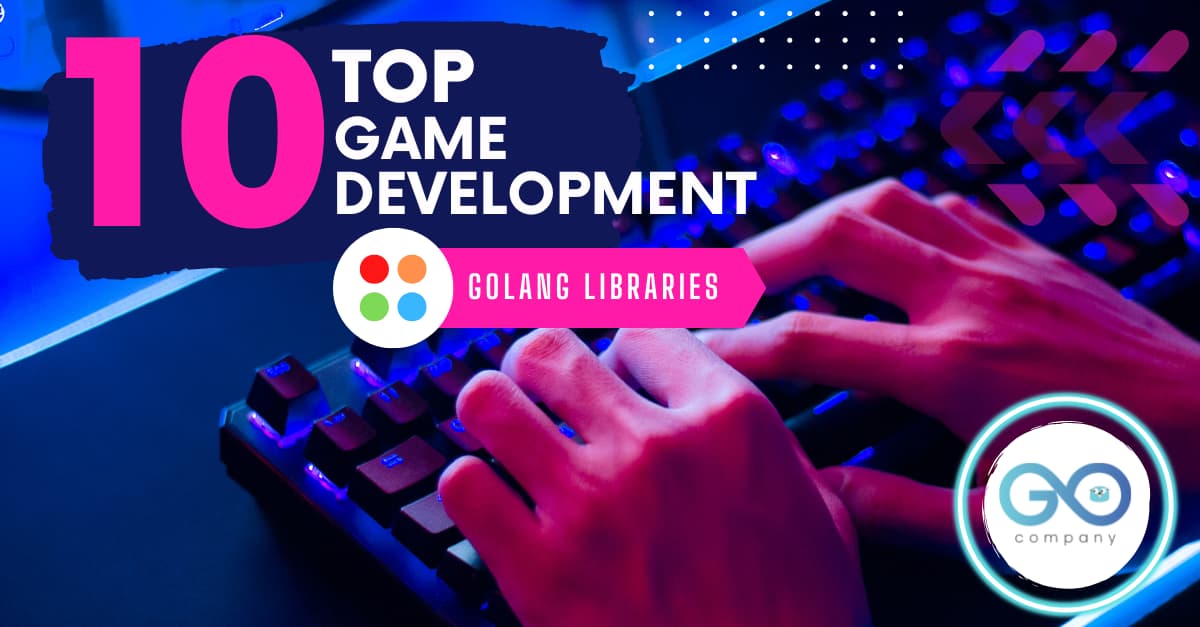
Golang, or Go, was developed by Google to be scalable, so that it can be used to tackle various problems. The open-source programming language finds a wide range of applications in systems programming, web development, back-end development, and cloud computing. But were you aware of the fact that there are several libraries in Golang for game development, making it a versatile choice for creating 2D and 3D games? If you're interested in Golang game development, these libraries can empower you to create engaging gaming experiences.
So, to all gaming programmers out there, go through this blog carefully, so that you can start designing unique games in Golang.
1. Ebitengine
- Ebitenegine, which was formerly hailed as Ebiten, is an open-source Golang game library. If you are looking forward to developing 2D games swiftly, and without much hassle, then this is the go-to library.
- And you can deploy these games on multiple platforms. These games work on Windows, Linux, FreeBSD, Linux (desktop), Android and iOS (mobile), and web browsers like WebAssembly.
- This library is known for high performance, and the games run fast with GPU. The drawing API is elementary and everything is in the form of an image. For instance, the data from the image file, the screen, and offscreen items.
- What happens is that many pictures are combined internally into a texture atlas. Moreover, the drawing operations are routinely carried out in batches.
- The library has been used to develop Bear’s restaurant, which is a production-level game.
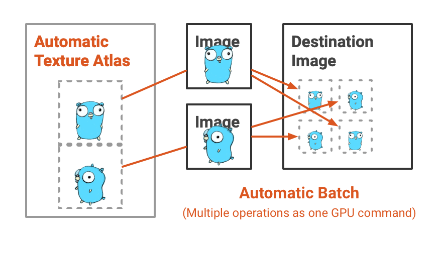
(Source: Ebitengine - A dead simple 2D game library for Go)
2. Pixel
- This library works only on desktop OSs like Linux, Windows, macOS. However, it is renowned for its swift 2D graphics (using text package for text drawing, Batch optimized drawing, IMDraw, Sprites, etc.).
- As per the developers, it is a convenient and simple API. You can easily draw a sprite using sprite.Draw (window, matrix).
- Furthermore, Pixel is integrated with the standard library of Golang. If you wish to load pictures, you can use the ‘image’ package.
- And if you want to estimate FPS and delta time, then you can use the ‘time’ package. If you want geometry transformations, then you should use Matrix, with which you can carry out rotation, scaling, and moving.
- You will also get access to Porter-Duff composition, with which you enhance 2D lighting, cut holes into objects, etc.
3. Azul3D
- As the name suggests, it is a 3D game engine that is cross platform. You get support for Linux, Windows, macOS. You also get 3D audio access via OpenAL.
- If you want extremely forward compatibility, then you would be pleased with the OpenGL 2.x rendering. And thanks to the gfx package, when Azul3D makes the transition to OpenGL 3 renderer, the process will be smooth.
- If you wish to know more about it, then you should know that Azul3D offers 2D physics with the help of Chipmunk 2D, with support for 3D physics (Bullet) in development.
- As per the creator of the project, we can soon expect to see scene graph libraries, AI and Blender model loaders that will enhance 3D animated model creation.
4. G3N
- G3N is a versatile OpenGL 3D gaming engine that can be used to write powerful cross-platform applications in Golang. The engine is congruent with Linux, macOS and Windows.
- Through OpenAL, you get access to 3D spatial audio. You also get real-time lighting like directional, point, spot lights and ambient.
- The engine provides you with fresnel reflectance, and other physical rendering like microfacet distribution, geometric occlusion. You get several model loader options like Wavefront OBJ, gITF and COLLADA.
- If you want image textures, you can load it from PNG, JPEG or GIF files. Based on the sprite sheets, you also get support for animated sprites.
- One benefit is that you get orthographic and perspective cameras, and multi materials and morph target support. If you wish to install the engine, then you have to type the following command:

(Source: GitHub - g3n/engine: Go 3D Game Engine (http://g3n.rocks))
5. Goworld
- If you are looking for a scalable gaming engine server, then goworld is the perfect choice for you. It has the ability to use more machines to improve the server capacity.
- With the help of AOI support, the engine is able to handle multiple entities and spaces. You would be surprised to know that it offers support for communication protocols like KCP, TCP and Websocket.
- With goworld, you can encrypt and compress the traffic between servers and clients. If you restart the server process, you can update the game logic.
- The engine server consists of a dispatcher, which enables packet redirection between games, and gates and games.
- GoWorld also supports gates, which look after client connections. And if you wish to run all the game logic, then goworld supported games should do the trick.
6. Oak
- Oak is termed as a pure Go engine, but upon further development, it has dependencies that cover C code. Any user can access the engine to design a GUI application or functional game that requires no compilation in C.
- With this engine, you get Window management, and support for simultaneous running of windows. You also get support for image rendering, where you can manipulate using interface render.Modifiable.
- The engine also has built-in Renderable types that almost covers common cases like Sequence, Switch, Sprite, Composite. And there are primitive builders as well, like Bezier, Line, Colorbox.
- You get access to the particle system, via which you can generate renderable particle sources (using package particle). Furthermore, you get support for mouse handling and joystick.
- For collision, you have 2D Raycasting, rtreego, and collision spaces. The package audio also provides excellent audio support.
- The games that have used Oak are Agent Blue, Jeremy the Clam, Fantastic Doctor, Hiring Now: Looters, SokoPic, etc.
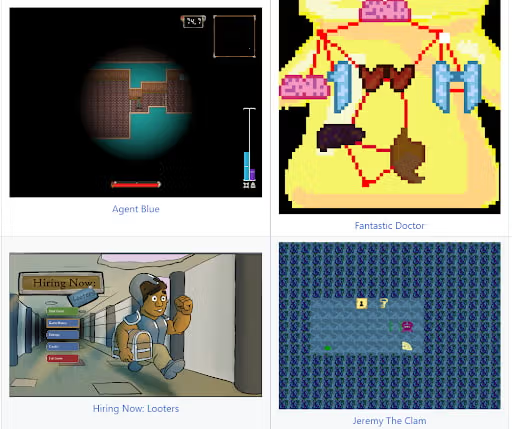
(Source: GitHub - oakmound/oak: A pure Go game engine)
7. Prototype
- If you wish to use minimal APIs, then this library is the perfect choice for you. Prototype is cross platform and you get support for Linux, Mac, and Windows.
- WIth this library, you can easily draw simple images and primitives on the screen. Furthermore, you can handle keyboard and mouse events while creating the desktop games.
- If you wish to work with the library on OS X and Linux, you would need to install the C compiler. However, this step is not necessary for Windows users.
8. Termloop
- This is a Golang gaming engine built for the terminal and on top of Termbox. In order to build the games, it offers an easy render loop. The main intention behind designing this engine is to make terminal game development easier.
- The engine takes mouse and keyboard inputs, collision detection, and it renders timers. With termloop, you can simulate camera movements, and get debug logging.
- There are several entity types which are built in this engine, such as text, rectangles, frame rate counters. You also have the option of loading various entities from ASCII art and you can utilize images for loading color maps.
- You can use JSON to load the ‘level’ maps, and get access to the ‘pixel mode’. The engine comes with easy portability of compiled games and cross compilation.
9. Nano
- Nano is an extremely powerful, swift, lightweight and usable game server library that is especially used for networking.
- Developers can get rid of mundane duplicate work, thanks to the presence of a core network architecture and a plethora of libraries and tools.
- 'It was basically designed for server-side applications like social games, mobile games, and real-time games. The library enables you to make powerful applications by combining various components.
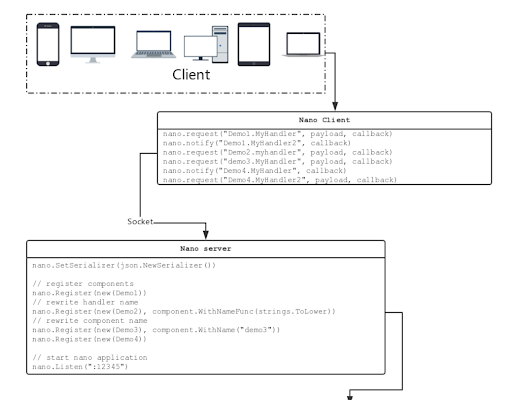
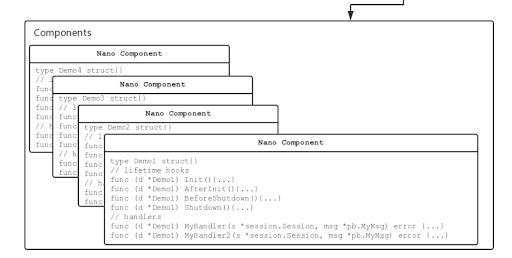
(Source: GitHub - lonng/nano: Lightweight, facility, high performance golang based game server framework)
10. Engo
- This is another 2D game engine that is written in Golang. This open-source engine takes advantage of a paradigm that is termed as ‘Entity-Component-System’.
- The engine is under heavy development. And if developers happen to come across any issues, bugs or they desire a feature, they can put forward their queries on gitter.
- If you visit Welcome - Engo (engoengine.github.io), you will get to see various tutorials on foreward, camera movement, sprite sheets, city building, HUD text, road building and much more.
- The engine allows you to use third-party systems with it such as Particle system, and Box2d Based Physics Systems.
- From the site, you will also get an insight into building animations and designing mobile applications. For instance, you can learn about symmetrical and unsymmetrical spritesheet, and how you can develop animations from them.
- These are some of the most useful libraries and engines in Golang for game development. As you can see, you create both 2D and 3D games and take advantage of various functionalities at the same time. The tools and libraries come in handy as it makes the programming easier and faster. So, good luck with your game development!
These are some of the most useful libraries and engines in Golang for game development. As you can see, you create both 2D and 3D games and take advantage of various functionalities at the same time. The tools and libraries come in handy as it makes the programming easier and faster. So, good luck with your game development!